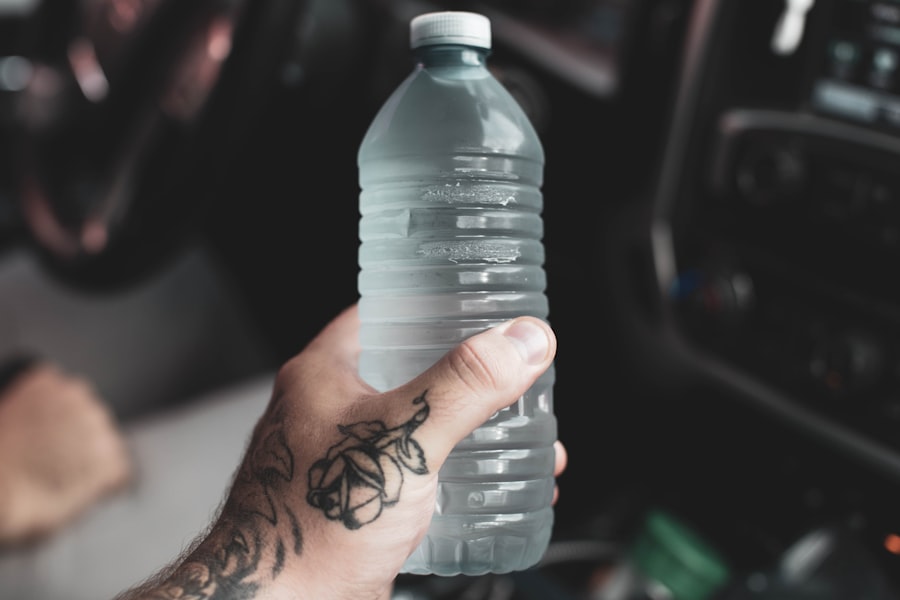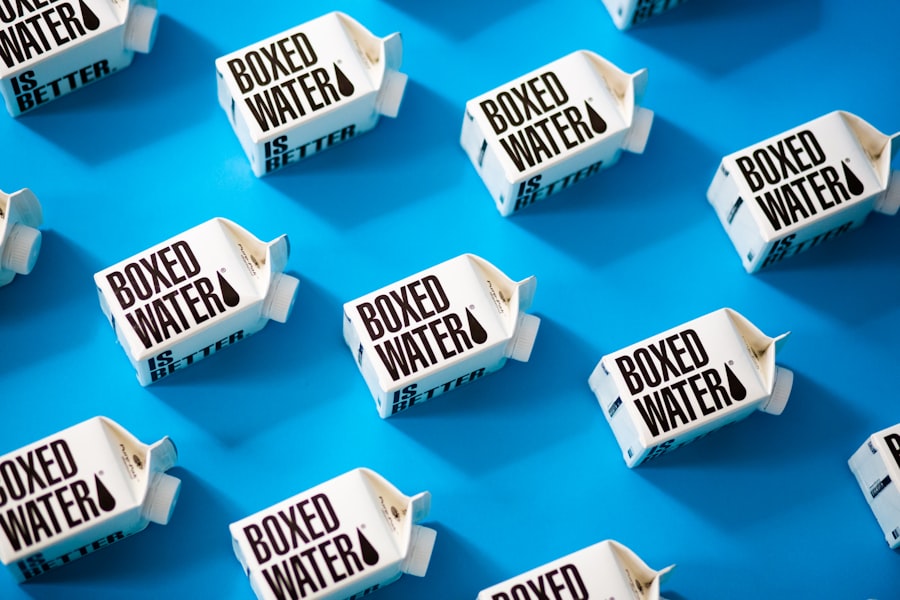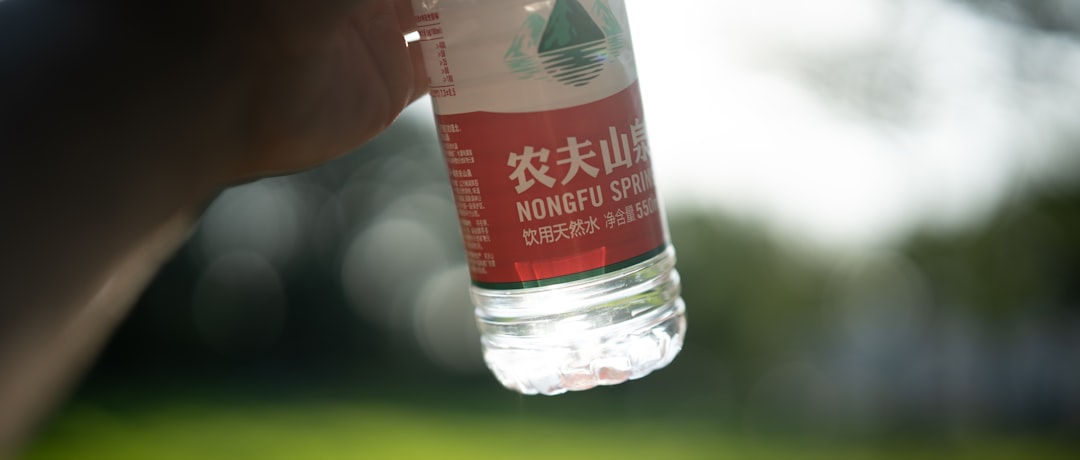In recent decades, the consumption of bottled water has surged dramatically, transforming from a niche market into a multi-billion dollar industry. This rise can be attributed to various factors, including increased health consciousness among consumers, the convenience of portable hydration, and aggressive marketing strategies employed by bottled water companies. As people become more aware of the importance of staying hydrated, many have turned to bottled water as a quick and easy solution, often perceiving it as a healthier alternative to sugary beverages.
The convenience factor cannot be overstated; bottled water is readily available in supermarkets, convenience stores, and vending machines, making it an accessible choice for individuals on the go. Moreover, the perception that bottled water is cleaner and safer than tap water has played a significant role in its popularity. Many consumers believe that bottled water undergoes more rigorous purification processes than municipal water supplies, leading them to choose it over tap water.
This belief has been reinforced by marketing campaigns that emphasize purity and quality, further driving the demand for bottled water. As a result, bottled water consumption has become a cultural norm in many societies, with people often opting for it in social settings, at work, or during travel.
Key Takeaways
- Bottled water consumption has surged, driven by marketing and convenience.
- Production of bottled water significantly harms the environment through plastic waste and resource use.
- Labels like “natural spring water” and “purified” often mislead consumers about water quality.
- Chemicals from plastic bottles pose potential health risks to consumers.
- Sustainable alternatives, such as reusable bottles and improved tap water systems, offer better solutions.
The Environmental Impact of Bottled Water Production
The environmental consequences of bottled water production are profound and far-reaching. The process begins with the extraction of water from natural sources, which can lead to depletion of local aquifers and disruption of ecosystems. In many cases, companies draw water from areas already facing water scarcity, exacerbating the challenges faced by local communities.
This extraction not only threatens wildlife habitats but also raises ethical concerns about the rights of local populations to access clean water. Furthermore, the production of plastic bottles contributes significantly to environmental degradation. The manufacturing process requires substantial amounts of fossil fuels, leading to greenhouse gas emissions that contribute to climate change.
Once consumed, many plastic bottles end up in landfills or oceans, where they can take hundreds of years to decompose. The proliferation of plastic waste has become a pressing global issue, with marine life suffering from ingestion and entanglement in plastic debris. The environmental impact of bottled water production is a critical concern that cannot be overlooked as society grapples with the consequences of its consumption habits.
The Truth Behind “Natural Spring Water” Claims

The labeling of bottled water as “natural spring water” often leads consumers to believe they are purchasing a product sourced from pristine environments. However, the reality is more complex. While some bottled waters do come from natural springs, others may be sourced from municipal supplies or treated tap water.
The term “spring water” can be misleading; regulations allow companies to use this label even if the water has undergone extensive processing before bottling. This lack of transparency raises questions about the authenticity of claims made by bottled water brands. Moreover, the environmental implications of sourcing spring water are significant.
Many springs are located in ecologically sensitive areas, and excessive extraction can lead to long-term damage to these ecosystems. Consumers may be unaware that their choice to purchase bottled spring water could contribute to the depletion of vital natural resources. As awareness grows about these practices, there is a growing demand for greater transparency and accountability within the bottled water industry.
The Deceptive Marketing of “Purified” and “Filtered” Bottled Water
| Metric | Purified Water | Filtered Water | Tap Water | Consumer Perception |
|---|---|---|---|---|
| Source | Municipal or other sources, treated to remove impurities | Municipal or natural sources, passed through filters | Local municipal supply | Purified perceived as highest quality |
| Common Filtration Methods | Reverse osmosis, distillation, deionization | Carbon filters, sediment filters | Chlorination, fluoridation | Filtered seen as healthier than tap |
| Typical Contaminant Removal | Removes most chemicals, bacteria, minerals | Removes chlorine, sediment, some chemicals | Varies, regulated for safety | Purified marketed as “cleaner” |
| Cost per Liter (approx.) | 1.00 – 3.00 | 0.50 – 2.00 | 0.001 – 0.005 | Consumers pay premium for bottled |
| Environmental Impact | High plastic waste, energy for purification | Moderate plastic waste, less energy | Minimal packaging waste | Environmental concerns growing |
| Regulatory Oversight | FDA regulated as food product | FDA regulated as food product | EPA regulated | Consumers often unaware of differences |
| Marketing Claims | “Pure,” “Clean,” “Safe,” “Healthy” | “Filtered,” “Natural,” “Better Taste” | “Safe,” “Municipal Standard” | Claims often misleading or vague |
The marketing strategies employed by bottled water companies often blur the lines between truth and deception. Terms like “purified” and “filtered” are frequently used to create an impression of superior quality and safety. However, these terms can be vague and misleading.
For instance, “purified” water may simply refer to tap water that has undergone basic filtration processes, yet consumers may interpret it as being significantly different from regular tap water. Additionally, the marketing tactics used to promote these products often play on consumers’ fears and misconceptions about tap water safety. By emphasizing the supposed dangers of contaminants in municipal supplies, companies can position their products as a safer alternative without providing substantial evidence to support these claims.
This manipulation of consumer perception not only drives sales but also perpetuates a cycle of mistrust towards public water systems.
The Health Risks of Plastic Bottle Chemicals
The health implications associated with consuming beverages from plastic bottles are increasingly coming under scrutiny. Many plastic bottles are made from polyethylene terephthalate (PET), which can leach harmful chemicals into the water they contain, especially when exposed to heat or prolonged storage. One such chemical is bisphenol A (BPA), which has been linked to various health issues, including hormonal disruptions and increased risk of certain cancers.
Moreover, even BPA-free plastics can release other potentially harmful substances over time. Research has shown that chemicals from plastic can migrate into the liquid inside the bottle, raising concerns about long-term health effects for consumers who regularly drink bottled water.
When comparing the cost of bottled water to tap water, the disparity is staggering. Bottled water can be up to 2,000 times more expensive than tap water, depending on the brand and location. This price difference raises questions about the value consumers place on convenience and perceived quality over cost-effectiveness.
For many households, relying on bottled water can lead to significant financial strain over time. In contrast, tap water is not only more affordable but also subject to strict regulations that ensure its safety and quality in many regions. Municipalities are required to conduct regular testing and provide transparency regarding contaminants and treatment processes.
As consumers become more informed about these facts, there is a growing movement advocating for increased use of tap water as a sustainable and economical choice for hydration.
The Influence of Celebrity Endorsements on Bottled Water Sales

Celebrity endorsements have become a powerful tool in shaping consumer behavior and preferences in various industries, including bottled water. When high-profile figures promote specific brands, they lend an air of credibility and desirability that can significantly boost sales. Many consumers are influenced by their favorite celebrities’ choices, often associating them with a lifestyle that embodies health and wellness.
However, this influence can also perpetuate misconceptions about bottled water’s superiority over tap water. Celebrities often promote brands without disclosing their financial ties or the environmental impact associated with those products. As a result, consumers may be swayed by marketing tactics rather than making informed decisions based on facts about sustainability and health risks.
The Lack of Regulation in the Bottled Water Industry
The bottled water industry operates with relatively lax regulations compared to other food and beverage sectors. While municipal tap water is subject to stringent safety standards enforced by government agencies, bottled water companies often face less oversight regarding sourcing practices and labeling claims. This lack of regulation raises concerns about consumer safety and environmental sustainability.
In many cases, bottled water companies are allowed to self-regulate their practices, leading to inconsistencies in quality and transparency. Consumers may unknowingly purchase products that do not meet their expectations for purity or safety due to this regulatory gap. As public awareness grows regarding these issues, there is increasing pressure on lawmakers to implement stricter regulations within the bottled water industry.
The Marketing Tactics Used to Target Specific Consumer Groups
Bottled water companies employ sophisticated marketing tactics designed to appeal to specific consumer demographics. By identifying target audiences based on lifestyle preferences, age groups, or health consciousness, these companies can tailor their messaging to resonate with potential buyers effectively. For instance, brands may market premium bottled waters as luxury items aimed at affluent consumers seeking exclusivity.
Additionally, marketing campaigns often leverage social media platforms to reach younger audiences who prioritize health and wellness trends. By promoting their products as essential components of an active lifestyle or as environmentally friendly options, companies can create a sense of urgency around their offerings. These targeted strategies not only drive sales but also shape consumer perceptions about hydration choices in contemporary society.
The Impact of Bottled Water on Global Water Scarcity
The global demand for bottled water has significant implications for freshwater resources worldwide. In regions where groundwater is already scarce, excessive extraction for bottling purposes can lead to severe depletion of local aquifers and negatively impact surrounding ecosystems. Communities reliant on these resources may find themselves facing increased competition for access to clean drinking water.
Moreover, the commodification of water through bottled products raises ethical questions about resource allocation in a world where billions still lack access to safe drinking water. As bottled water consumption continues to rise, it becomes increasingly crucial for consumers and policymakers alike to consider the broader implications of their choices on global water scarcity issues.
The Sustainable Alternatives to Bottled Water
As awareness grows regarding the environmental impact and health risks associated with bottled water consumption, many individuals are seeking sustainable alternatives for hydration. Reusable water bottles have gained popularity as eco-friendly options that reduce plastic waste while providing convenient access to clean drinking water. Many cities have invested in public drinking fountains and refill stations to encourage residents to choose tap water over single-use bottles.
These alternatives not only promote sustainability but also empower individuals to make informed choices about their hydration habits while minimizing their environmental footprint. In conclusion, while bottled water consumption has risen dramatically over recent years due to convenience and perceived health benefits, it is essential for consumers to critically evaluate its environmental impact, health risks associated with plastic chemicals, and the deceptive marketing tactics employed by companies in this industry.
By exploring sustainable alternatives such as reusable bottles and home filtration systems, individuals can make informed choices that prioritize both personal health and environmental sustainability.
Bottled water marketing often employs deceptive tactics to create a perception of purity and health benefits that may not be entirely accurate. For a deeper understanding of these marketing strategies and their implications, you can read more in this insightful article on the subject. Check it out here: Hey Did You Know This.
WATCH THIS! The $400 Billion Water Lie: Why Bottled Water Is a Scam
FAQs
What is bottled water marketing deception?
Bottled water marketing deception refers to misleading advertising practices used by some companies to promote bottled water. This can include false claims about purity, source, health benefits, or environmental impact that are not supported by evidence.
How do companies deceive consumers in bottled water marketing?
Companies may use vague or exaggerated language, such as labeling water as “pure,” “natural,” or “spring water” without clear definitions. They might also imply health benefits or environmental friendliness that are not accurate or substantiated.
Is bottled water always safer or healthier than tap water?
Not necessarily. In many regions, tap water is subject to strict regulations and testing, often making it as safe or safer than bottled water. Bottled water quality varies and is not always superior to tap water.
Are all bottled waters sourced from natural springs?
No. Some bottled waters come from municipal tap water sources but are marketed as premium products. The labeling can be misleading if it suggests a natural spring source when that is not the case.
What should consumers look for to avoid being misled by bottled water marketing?
Consumers should check the label for the source of the water, look for certifications or testing information, and be cautious of vague claims. Researching the brand and understanding local tap water quality can also help.
Does bottled water marketing impact the environment?
Yes. Marketing that encourages excessive bottled water consumption contributes to plastic waste and environmental degradation. Misleading claims about environmental benefits can obscure the true impact of bottled water production and disposal.
Are there regulations governing bottled water marketing?
Yes. In many countries, regulatory agencies oversee bottled water labeling and advertising to prevent false or misleading claims. However, enforcement and standards can vary, and some deceptive practices still occur.
How can consumers verify the quality of bottled water?
Consumers can look for third-party testing certifications, review water quality reports provided by the company, and consult independent sources or regulatory agencies for information about bottled water brands.
